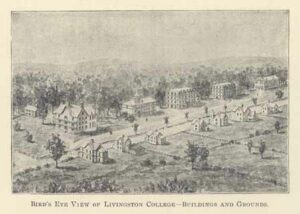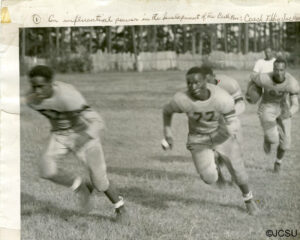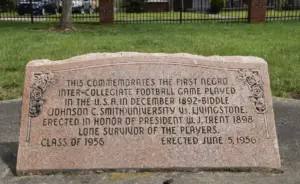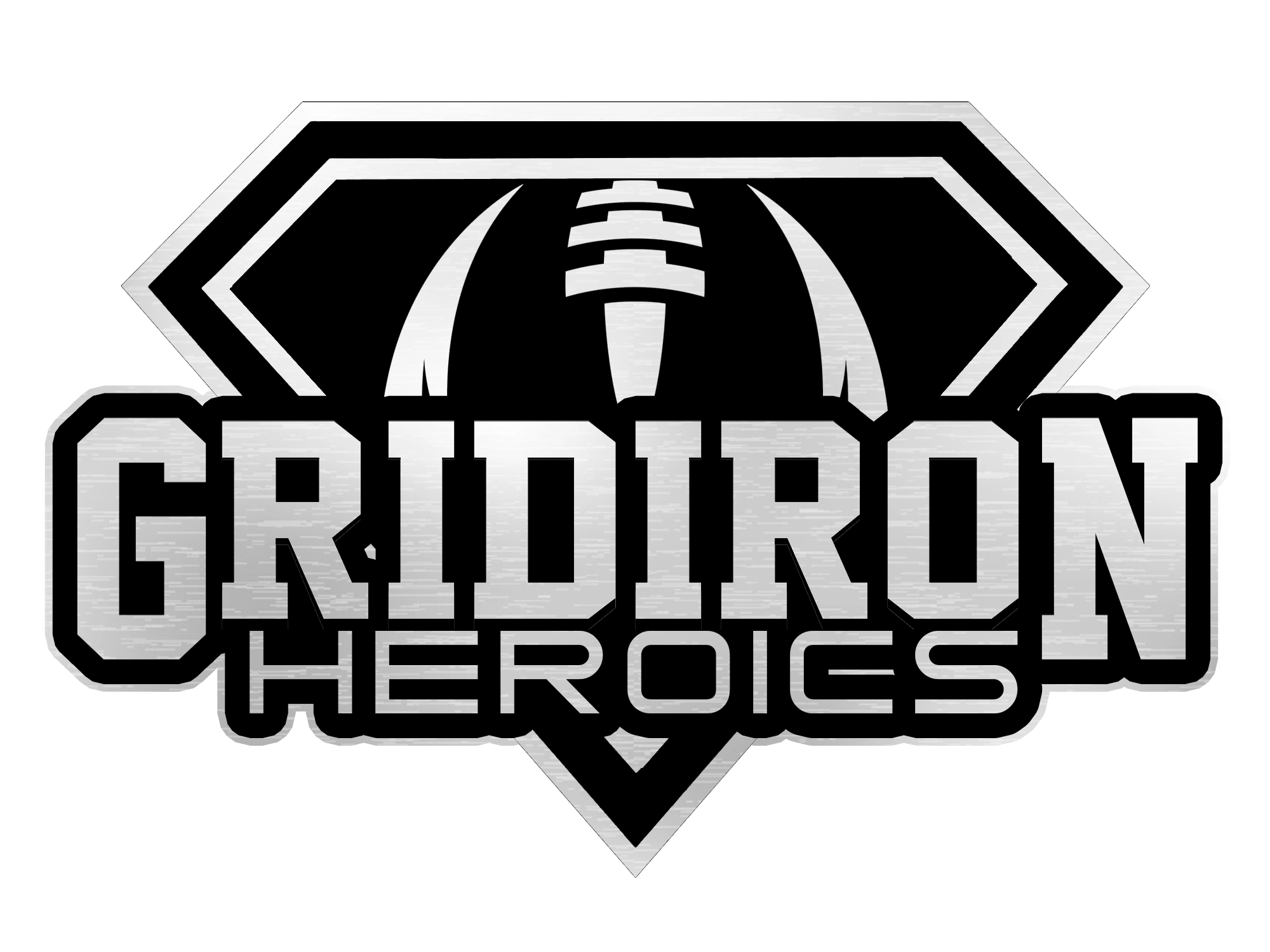Our last edition of 2023 African American History Month articles, will discuss the first HBCU (Historical Black College or University) football game in 1892. In a time when black players were rarely allowed to participate in collegiate football, the first game between two HBCUs nearly 30 years after the first college football game was a monumental historical event in US History.
African American players who did break the color lines at PWIs (predominantly white institutions) were exposed to horrific racism from teammates, opponents, fans, coaches, and other staff. Not enough positive things can be said for minority players who fought for the integrated sport we have today. At the same time, showcasing black excellence at universities where people didn’t have to face rampant racism and could play their sport with relative safety is similarly meaningful.

HBCUs allowed African Americans to pursue college education at a time when they weren’t accepted elsewhere. They also gave athletic opportunities to players ostracized in mainstream American society. Today, they continue to serve a similar purpose – they offer an educational space that fosters black excellence, is rich in African American culture, and provides a safe space of sorts for people who want to connect with their culture, escaping widespread prejudice in their sport and learning environment. Many of our NFL greats are HBCU alumni like Steve McNair (read my recent article on him here).
The First HBCU Collegiate Game
On December 27th, 1892, Biddle College (now John C. Smith University) and Livingstone College showed off in Salisbury, North Carolina. The teams played on Livingstone College’s snowy front lawn in two 45-minute halves (the 2022 Bills can relate), but they didn’t have access to a snow plow, unlike this game. The lawn was described as a “cow pasture.”

Both Biddle and Livingstone teams had to wear their street shoes on the field, with cleats that were taken on and off. The players also had to buy their own uniforms made out of 10-ounce white duckling cloths sewed in-house by Livingstone College students, women in the Industrial Department, brand new for the first game.
Much props to the ladies; they handmade the uniforms and the cleats, adapting them to street shoes with trial and error. You are not alone if you don’t know what an industrial department is. Colleges in the 1800s were more like our modern-day trade schools, more so than colleges. They provided vocational education in agriculture, home economics, and industrial arts. Livingstone University was the first NC college to grant black women degrees in 1887.

The Livingstone-Biddle game was not considered an official contest, but both teams raised money to buy a regulation-sized football anyway. Hundreds of people came from far distances – walking, riding a horse, or wagoning their way to the game. Biddle players had to ride 40 miles via wagon in the snow to attend the game. The Biddle team had practiced for two years studying and practicing the art of football before they felt prepared to play; they weren’t missing this game for anything.
Livingstone had one touchdown after a fumble recovery, but Biddle argued that the ball was recovered out of bounds, and since the markings were snowed over, they won that call. Biddle University won 5-0. A monument exists at Livingstone college to this day. Both schools have a bitter rivalry still, and the Commemorative Classic, in honor of this game, happens yearly.

North Carolina had college football, but this was something different; this was two black teams playing each other. Fans at the time knew what we know now as well – this game was significant. Not because it was flashy or extraordinary but because it was the beginning of HBCU football. Thank you, Biddle! Thank you, Livingstone! You rose above an unbelievable amount of barriers to create a beautiful legacy.
Want to catch up on the other African American History Month articles? Look here, here, and here.

